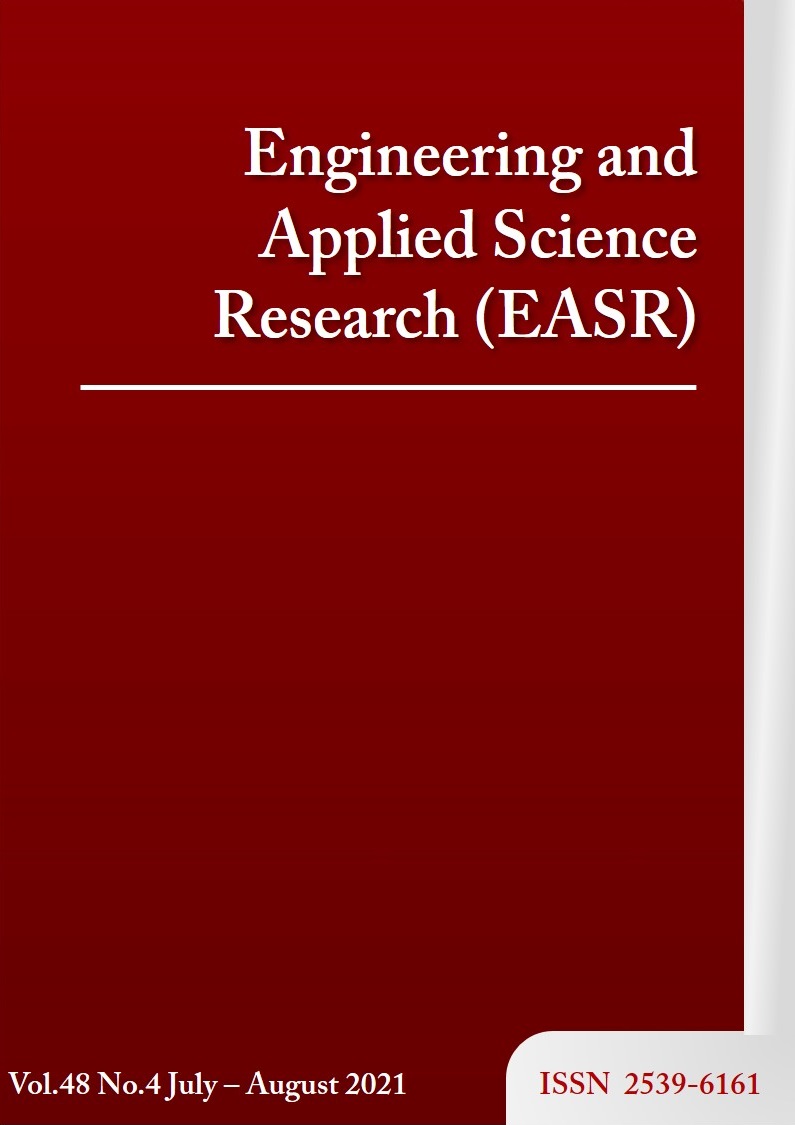Corrosion behavior of CA6NM in simulated geothermal brine highlighted by Electrochemical Impedance Spectroscopy (EIS)
Main Article Content
Abstract
Martensitic stainless steel CA6NM has the potential to be utilized as a turbine blade material for geothermal power plants because of its superior mechanical properties. However, the turbine blade material for geothermal power plants must have not only superior mechanical properties but also excellent corrosion resistance. Therefore, in this study, CA6NM was modified by varying its molybdenum (Mo) and nitrogen (N) contents to improve its corrosion resistance in the geothermal environment. The Mo and N contents of CA6NM were modified as follows: CA6NM1 with 1% Mo, CA6NM2 with 2% Mo, and CA6NM3 with 2% Mo and 0.1% N. Two temperature parameters, i.e., room temperature and 60°C, and two CO2 gas parameters, i.e., presence and absence of CO2 gas, were utilized in this study. To understand the corrosion behavior of modified CA6NM in geothermal brine, the electrochemical impedance spectroscopy (EIS) test was performed in simulated geothermal brine. The results of the EIS test showed that both Mo and N can increase the corrosion resistance of CA6NM in simulated geothermal brine at 60°C.
Article Details
This work is licensed under a Creative Commons Attribution-NonCommercial-NoDerivatives 4.0 International License.
References
Hiroshi T, Li-Bin N, Hiromasa K, Naoki T, Kensuke M, Yoshihiro S, et al. Corrosion behavior of steam turbine materials for geothermal power plants. 14th International Conference on the Properties of Water and Steam; 2004 Aug 29 - Sep 3; Kyoto, Japan. Kyoto: IAPWS; 2004. p. 718-23.
Mundhenk N, Huttenloch P, Babler R, Kohl T, Steger H, Zorn R. Electrochemical study of the corrosion of different alloys exposed to DE aerated 80°C geothermal brines containing CO2. Corrosion Sci. 2014;84:180-8.
Cabrini M, Lorenzi S, Pastore T, Favilla M, Perini R, Tarquini B. Materials selection for dew-point corrosion in geothermal fluids containing acid chloride. Geothermics. 2017;69:139-44.
Carole L, Isadora NV, Thiago JM, Marc M, Ricardo PN, Gregory B, et al. Synergy between molybdenum and nitrogen on the pitting corrosion and passive film resistance of austenitic stainless steels as a pH-dependent effect. Mater Chem Phys. 2017;186:237-45.
Mirakhorli F, Cao X, Pham XT, Wanjara P, Fihey JL. Phase structures and morphologies of tempered CA6NM stainless steel welded by hybrid laser-arc process. Mater Charact. 2017;123:264-74.
Dawoud UM, Vanweele SF, Szklarska-Smialowska Z. The effect of H2S on the crevice corrosion of AISI 410 and CA6NM stainless steels in 3.5% NaCl solutions. Corrosion Sci. 1992;32:295-306.
Moch Syaiful A, Toni BR, Efendi M. Pitting resistance of the modified 13cr martensitic stainless steel in chloride solution. Int J Electrochem Sci. 2018;13:1515-26.
Cesiulis H, Tsyntsaru N, Ramanavicius A, Ragoisha G. The study of thin films by electrochemical impedance spectroscopy. Nanostructures and thin films for multifunctional applications. New York: Springer; 2016. p. 3-42.
Samaneh E, Mahmood A, Hossein S. Interpretation of cyclic potentiodynamic polarization test results for study corrosion behavior of metals : A Review. Protect Met Phys Chem Surface. 2018;54(5):976-89.
Martin M, Virginie R, Rafael E, Marc M, Ricardo PN. Molybdenum effect on the sulfide stress corrosion of a super martensitic stainless steel in sour environment highlighted by electrochemical impedance spectroscopy. Electrochim Acta. 2017;252:58-66.
Pfennig A, Wiegand R, Wolf M, Bork C. Corrosion and corrosion fatigue of AISI 420C (X46Cr13) at 60°C in CO2 -saturated artificial geothermal brine. Corrosion Sci. 2013;68:134-43.
Jinlong L, Tongxiang L, Chen W. Surface enriched molybdenum enhancing the corrosion resistance of 316L stainless steel. Mater Lett. 2016;171:38-41.
Brytan Z, Niagaj J, Reiman L. Corrosion studies using potentiodynamic and eis electrochemical techniques of welded lean duplex stainless steel UNS S82441. Appl Surf Sci. 2016;388:160-8.
Mesquita TJ, Chauveau E, Mantel M, Kinsman N, Nogueira RP. Influence of Mo alloying on pitting corrosion of stainless steels used as concrete reinforcement. Rem Revista Escola de Minas. 2013;66:173-8.
Tomio A, Sagara M, Doi T, Amaya H, Otsuka N, Kudo T. Role of alloyed molybdenum on corrosion resistance of austenitic Ni-Cr-Mo-Fe alloys in H2S-Cl environments. Corrosion Sci. 2015;98:391-8.
Moch Syaiful A, Bobby F, Arini N, Soesaptri O, Efendi M. Study of pitting resistance of rebar steels in jakarta coastal using simulated concrete pore solution. Proc Eng. 2017;171:517-25.
Arini N, Muchlis AP, Rini R, Efendi M. Pitting corrosion resistance of CA6NM as geothermal turbine blade material in simulated artificial geothermal brine. IOP Conf Ser: Mater Sci Eng. 2019;541:012016.
Niu L, Nakada K. Effect of chloride and sulfate ions in simulated boiler water on pitting corrosion behavior of 13Cr steel. Corrosion Sci. 2015;96:171-7.
Mukhlis AP, Vinda P, Moch Syaiful A, Arini N, Efendi M. Mechanical properties of modified cast martensitic stainless steel CA6NM with addition of molybdenum and nitrogen. AIP Conf Proc. 2020;2232:060001.
Efendi M, Moch Syaiful A, Siska P, Toni BR, Bintang A. Influence of Mo and Ni on microstructure and hardness of 13Cr martensitic stainless steel. Metalurgi. 2015;3:133-40.



